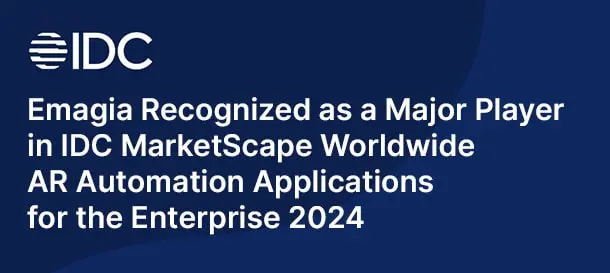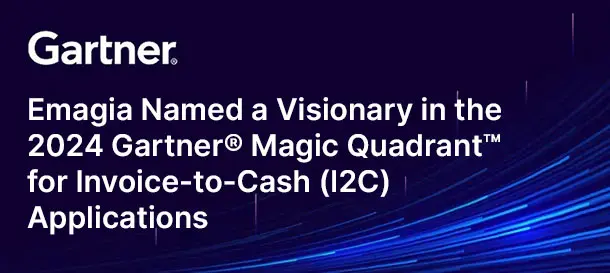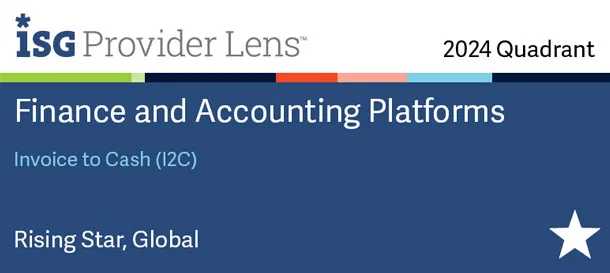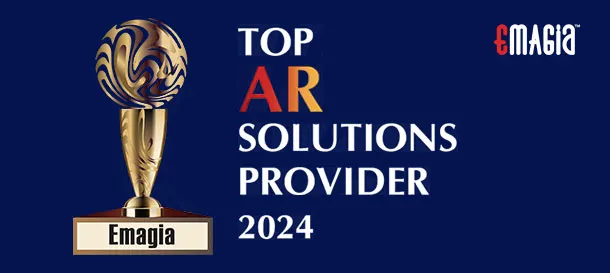In the complex dance of Accounts Receivable (AR), where every payment received is a step towards financial health, a common and often frustrating misstep occurs: the deduction. Instead of receiving the full invoice amount, businesses frequently encounter payments that are short by a certain sum, accompanied by a vague or complex explanation. These “deductions” represent a direct hit to profitability, a slowdown in cash flow, and a significant administrative burden for finance teams. They are a silent drain on revenue, often overlooked until they accumulate into substantial losses.
For many organizations, managing these accounts receivable deductions is a manual, reactive, and fragmented process. Identifying the reason for the short payment, gathering supporting documentation, validating the claim, and ultimately resolving the dispute can consume countless hours, leading to delayed cash application, inflated Days Sales Outstanding (DSO), and strained customer relationships. The imperative to efficiently manage and resolve these customer deductions has never been more critical for maintaining healthy cash flow and protecting profit margins.
This comprehensive guide will delve deep into Deductions: Key Challenges and What Emagia Offer to revolutionize their management. We will explore the common types of deductions, dissect the significant hurdles businesses face in their resolution, and illuminate how modern, AI-powered solutions are transforming this traditionally painful process. Join us as we uncover how intelligent automation can streamline deduction management, accelerate cash flow, enhance accuracy, and ultimately safeguard your profitability, positioning your finance function for the demands of next generation finance.
Understanding the Landscape of Accounts Receivable Deductions
Before addressing the challenges, let’s define what deductions are and why they occur.
What are Deductions? Defining the Short Payment
In Accounts Receivable, a deduction (also known as a short payment or chargeback) occurs when a customer pays less than the full amount of an invoice, claiming a specific reason for the discrepancy. Instead of remitting the total due, they subtract an amount, leaving a residual balance on the invoice. These are distinct from simple partial payments where the customer intends to pay the rest later; deductions imply a dispute or an adjustment claimed by the customer. Managing these customer deductions is a critical part of the cash application process.
Common Types of Trade Deductions and Their Origins
Deductions come in various forms, often reflecting different areas of business operations:
- Pricing Deductions:
- Reasons: Discrepancies between quoted and invoiced prices, unapplied discounts, promotional allowances, or pricing errors.
- Promotional/Marketing Deductions:
- Reasons: Customer taking deductions for co-op advertising, trade promotions, slotting fees, or other marketing programs, often without proper documentation or pre-approval.
- Logistics/Freight Deductions:
- Reasons: Claims for damaged goods, shortages, overages, late deliveries, or incorrect freight charges.
- Returns Deductions:
- Reasons: Customer returns goods and deducts their value from the payment, sometimes without a valid Return Merchandise Authorization (RMA).
- Quality/Damage Deductions:
- Reasons: Claims for defective products or goods damaged in transit.
- Administrative Deductions:
- Reasons: Small, often unexplained deductions, duplicate payments, or processing fees.
Each type of trade deduction requires specific investigation and validation.
Why Deductions Occur: Root Causes and Prevention
Deductions are rarely random; they stem from various root causes within the Order-to-Cash (O2C) cycle:
- Customer Behavior: Customers may take unauthorized deductions to improve their own cash flow or due to a misunderstanding of terms.
- Internal Operational Errors: Mistakes in sales orders, pricing, shipping, or billing can lead to legitimate customer claims.
- Lack of Clear Agreements: Ambiguous promotional terms or delivery agreements can create disputes.
- Ineffective Communication: Poor communication between sales, logistics, and finance teams can lead to unvalidated deductions.
Understanding these origins is the first step in effective managing deductions.
Deductions: Key Challenges in Their Management and Resolution
The complexity of deductions creates significant hurdles for finance and AR teams.
Manual Identification and Data Fragmentation: The Initial Bottleneck
The first challenge is simply identifying that a deduction has occurred and understanding why. This often involves:
- Manual Remittance Processing: Payments arrive with remittance advice in various unstructured formats (emails, PDFs, paper stubs), requiring manual review to spot short payments.
- Fragmented Information: The reason for the deduction (e.g., a pricing dispute, a damaged goods claim) might be buried in an email, a separate customer service ticket, or a verbal agreement, making it hard to link to the payment.
- Time-Consuming Data Entry: Once identified, deduction details (reason code, amount, associated invoice) must be manually keyed into the accounting system, a process prone to errors.
This manual effort significantly slows down the initial deduction management process.
Slow Research and Validation: The Investigation Quagmire
Once a deduction is identified, the real work begins:
- Lack of Supporting Documentation: Often, customers don’t provide clear documentation for their deduction, forcing AR teams to chase down information.
- Cross-Departmental Collaboration Hurdles: Validating a deduction often requires input from sales (pricing agreements), logistics (delivery issues), customer service (complaints), or even legal. This often involves manual emails, phone calls, and tracking, leading to delays.
- Difficulty in Root Cause Analysis: Without clear data, it’s hard to determine if a deduction is valid, invalid, or due to an internal error, hindering effective deduction resolution.
This investigative phase is a major drain on resources and a source of frustration.
Impact on Cash Flow, DSO, and “Unapplied Cash”
Unresolved deductions have a direct and negative impact on financial metrics:
- Delayed Cash Application: Payments with deductions often sit as “unapplied cash” until the deduction is resolved, artificially inflating Accounts Receivable (AR) balances.
- Inflated Days Sales Outstanding (DSO): The longer payments remain unapplied or deductions unresolved, the higher the DSO, masking true collection efficiency and misrepresenting cash flow.
- Revenue Leakage: Invalid deductions, if not challenged and recovered, become permanent revenue leakage, directly impacting profitability.
These financial consequences highlight the critical need for efficient managing deductions.
Strain on Customer Relationships and Operational Costs
The challenges extend beyond financial metrics:
- Customer Frustration: Customers may receive collection calls for balances they believe they’ve legitimately deducted, leading to strained relationships.
- High Administrative Costs: The labor involved in manual research, communication, and reconciliation for deductions is significant, adding to operational overhead.
- Lack of Accountability: Without clear tracking, it’s hard to assign responsibility for resolving deductions or to identify recurring issues with specific customers or internal processes.
These are significant key challenges in the deduction management process.
The Traditional Deduction Management Process (and Its Flaws)
Let’s map out the typical manual process and highlight its inherent weaknesses.
The Manual Deduction Management Workflow
In many organizations, the process of handling deductions looks like this:
- Payment Received: A short payment is identified during manual cash application.
- Initial Identification: AR clerk notes the short payment and attempts to find remittance advice.
- Manual Research: If remittance is unclear, the clerk contacts the customer via phone/email for clarification.
- Spreadsheet Tracking: Deduction details are logged in a spreadsheet (customer, invoice, amount, claimed reason).
- Internal Email/Call: The AR clerk emails/calls relevant internal departments (sales, logistics) to validate the deduction.
- Waiting for Validation: Significant time is spent waiting for internal teams to respond.
- Resolution Decision: Based on validation, the deduction is either approved (leading to a credit memo/write-off) or deemed invalid (requiring collection from the customer).
- Manual System Update: The AR ledger is manually updated, and if valid, a credit memo is manually generated.
- Follow-up (if invalid): If invalid, the AR team manually follows up with the customer for the remaining balance.
This fragmented, manual approach is the root cause of many of the key challenges.
Inherent Flaws: Silos, Delays, and Lack of Insights
- Data Silos: Information about deductions is scattered, preventing a holistic view.
- Excessive Delays: Each manual step, especially cross-departmental communication, introduces significant delays.
- Lack of Visibility: Management has limited real-time insight into the volume, value, or resolution status of deductions.
- No Root Cause Analysis: Without structured data, it’s difficult to identify recurring deduction types or problematic customers/processes, hindering proactive prevention.
- Inefficient Resource Allocation: AR teams spend disproportionate time on low-value, repetitive tasks.
These flaws underscore the urgent need for a modern deduction management software solution.
The Transformative Power of Modern Deduction Management Solutions
Leveraging specialized software, particularly those powered by AI, revolutionizes the way businesses managing deductions.
The Shift to Automated Deduction Management
Automated deduction management involves using specialized software to streamline and intelligentize every stage of the deduction lifecycle, from identification and validation to resolution and recovery. It moves beyond manual processes to leverage technology for efficiency and accuracy. This is a key component of comprehensive accounts receivable automation.
Key Benefits of a Dedicated Deduction Management Software
Implementing a robust deduction management software solution offers profound advantages:
- Accelerated Resolution: Significantly reduces the time it takes to identify, validate, and resolve deductions, improving cash flow.
- Reduced Revenue Leakage: Proactively identifies invalid deductions, enabling faster recovery and protecting profit margins.
- Enhanced Operational Efficiency: Automates repetitive tasks, freeing up AR teams for higher-value activities.
- Improved Accuracy: Minimizes human error in data extraction and matching.
- Better Financial Visibility: Provides real-time insights into deduction trends, root causes, and resolution status.
- Stronger Internal Controls: Centralizes data and workflows, enhancing accountability and audit trails.
- Improved Customer Relationships: Faster resolution of legitimate claims and fewer erroneous collection calls.
These benefits directly address the key challenges faced by businesses.
Emagia’s Approach: Revolutionizing Deduction Management with Autonomous Finance
Emagia’s AI-powered Autonomous Finance platform offers a comprehensive solution specifically designed to address the key challenges of deductions, transforming them from a drain on resources into a manageable and insightful part of the Order-to-Cash cycle. This section details what Emagia offer in this critical area.
Emagia’s Holistic View of the Order-to-Cash (O2C) Cycle
Emagia understands that deductions are not isolated events but symptoms of issues across the entire O2C cycle (sales, order management, logistics, billing, cash application). Its platform takes a holistic approach, integrating deduction management seamlessly into the broader AR and cash flow ecosystem.
AI-Powered Deduction Identification and Categorization
At the heart of Emagia’s offering is its intelligent capability to identify and categorize deductions:
- Universal Remittance Data Ingestion: Emagia’s GiaCASH AI module automatically ingests payment data and remittance advice from virtually any source and format (emails, PDFs, EDI, bank files, web portals, checks).
- Intelligent Deduction Spotting: Leveraging advanced Machine Learning, GiaCASH AI can automatically detect short payments and identify potential deductions, even when remittance advice is vague or unstructured.
- Automated Coding: The AI learns from historical data to automatically categorize deductions to predefined reason codes (e.g., “pricing error,” “damaged goods,” “promotional allowance”), eliminating manual coding and ensuring consistency.
This proactive identification is crucial for overcoming the initial bottleneck of accounts receivable deductions.
Automated Workflow and Routing for Resolution
Emagia streamlines the entire deduction resolution process through intelligent workflows:
- Configurable Workflows: Automatically routes identified deductions to the appropriate internal teams (sales, logistics, customer service, finance) based on the deduction type, amount, or customer segment.
- Automated Task Assignment: Assigns specific tasks to individuals or teams, ensuring accountability and preventing delays.
- Escalation Paths: Configurable escalation rules ensure that high-value or long-standing deductions are brought to management’s attention promptly.
This addresses the challenge of slow dispute resolution and collaboration.
Centralized Collaboration Hub for Dispute Resolution
Emagia provides a single source of truth for all deduction-related activities:
- Centralized Documentation: All relevant documents (invoices, POs, shipping proofs, communication logs) are stored and accessible in one place, eliminating the need to search disparate systems.
- Internal & External Communication Tools: Facilitates seamless communication and collaboration between AR teams and other internal departments, as well as with customers, directly within the platform.
- Audit Trails: Maintains comprehensive audit trails for every step of the deduction resolution process, enhancing transparency and compliance.
This streamlines the dispute management aspect of deductions.
Seamless Integration with ERP and Cash Application
Emagia’s platform integrates deeply with core financial systems:
- Real-time ERP Sync: Automatically updates the AR ledger in your ERP (e.g., SAP, Oracle, NetSuite) as deductions are identified, resolved, or written off, ensuring accurate financial statements.
- Integrated Cash Application: Works hand-in-hand with Emagia’s GiaCASH AI to ensure that payments with deductions are correctly applied, and the remaining deduction balance is immediately flagged for resolution, preventing “unapplied cash.”
This ensures that cash application and deduction management are fully aligned.
Real-time Analytics and Reporting for Deduction Insights
Emagia provides powerful reporting capabilities to transform deduction data into actionable insights:
- Deduction Dashboards: Real-time visibility into the volume, value, and aging of deductions.
- Root Cause Analysis: Identify the most common types of deductions, problematic customers, or internal processes that generate deductions, enabling proactive prevention strategies.
- Recovery Rate Tracking: Monitor the success rate of recovering invalid deductions, highlighting areas for improvement.
- Impact on DSO & Profitability: Analyze the direct impact of deductions on Days Sales Outstanding and overall profitability.
This addresses the challenge of lack of visibility and provides insights to combat revenue leakage.
Best Practices for Effective Deduction Management
Beyond technology, strategic practices are crucial for minimizing and resolving deductions.
Proactive Prevention: Addressing Root Causes
The best deduction is the one that never happens. Focus on:
- Clear Pricing and Terms: Ensure sales agreements, pricing, and payment terms are unambiguous.
- Accurate Invoicing: Implement robust quality checks to prevent billing errors.
- Streamlined Logistics: Minimize shipping errors, damages, and delays.
- Pre-approval for Promotions: Require formal pre-approval for all promotional allowances or discounts.
Standardizing Deduction Codes and Policies
Implement a standardized set of deduction reason codes. Develop clear, written policies for how each type of deduction should be handled, validated, and resolved. This ensures consistency and simplifies automation.
Fostering Cross-Functional Collaboration
Break down silos between sales, logistics, customer service, and finance. Establish clear communication channels and shared goals for deduction resolution. Technology can facilitate this, but a cultural shift is also required.
Timely Identification and Resolution
The faster a deduction is identified and investigated, the higher the chances of recovery and the lower its impact on cash flow. Prioritize immediate action on all new deductions.
Continuous Monitoring and Analysis
Regularly review deduction reports to identify trends, recurring issues, and problematic customers. Use these insights to refine your prevention strategies, optimize your deduction resolution processes, and improve overall profitability.
Emagia: Your Partner in Conquering Deductions for Autonomous Finance
In the complex world of Accounts Receivable, deductions represent a persistent challenge that can significantly erode profitability and hinder cash flow. Emagia’s AI-powered Autonomous Finance platform is specifically designed to address these key challenges, offering a comprehensive and intelligent solution that transforms how businesses manage and resolve deductions. This is what Emagia offer as a leader in next generation finance.
Emagia’s integrated approach, combining intelligent cash application (GiaCASH AI) with robust collections and dispute management (GiaCOLLECT AI), ensures that every deduction is systematically identified, categorized, routed for resolution, and tracked from inception to closure. By leveraging advanced Machine Learning and Intelligent Document Processing, Emagia automates the manual, error-prone tasks of remittance processing and deduction identification, freeing up valuable finance resources.
Furthermore, Emagia provides real-time visibility into deduction trends, root causes, and recovery rates, empowering businesses to move from reactive firefighting to proactive prevention. This not only accelerates cash flow and reduces Days Sales Outstanding (DSO) but also significantly protects profit margins from revenue leakage. Emagia transforms deduction management from a cumbersome administrative burden into a strategic lever for financial health, enabling businesses to achieve true financial agility and operational excellence in their entire Order-to-Cash cycle.
Frequently Asked Questions (FAQs) About Deductions: Key Challenges and What Emagia Offer
What are deductions in Accounts Receivable?
Deductions in Accounts Receivable are short payments made by customers on an invoice, where the customer claims a specific reason for reducing the amount paid (e.g., damaged goods, promotional allowance, pricing error). They differ from simple partial payments as they imply a dispute or adjustment.
What are the key challenges in managing deductions?
The key challenges in managing deductions include manual identification from fragmented remittance data, time-consuming research and validation, slow cross-departmental collaboration, negative impact on cash flow and Days Sales Outstanding (DSO), and significant revenue leakage from unresolved or invalid claims.
How does deduction management software help overcome these challenges?
Deduction management software helps by automating deduction identification and categorization (often using AI), streamlining workflows for resolution, providing a centralized collaboration hub, integrating with ERP and cash application, and offering real-time analytics to identify root causes and track recovery rates.
What is the impact of unresolved accounts receivable deductions on cash flow?
Unresolved accounts receivable deductions lead to delayed cash application (creating “unapplied cash”), inflate Days Sales Outstanding (DSO), and directly result in revenue leakage if invalid deductions are not recovered. This significantly impacts a company’s liquidity and profitability.
How does AI contribute to effective deduction resolution?
AI contributes to effective deduction resolution by intelligently identifying and categorizing deductions from unstructured remittance advice, automating the routing of disputes to the correct internal teams, and providing insights into recurring deduction patterns to enable proactive prevention strategies.
What is “unapplied cash” and how does it relate to deductions?
“Unapplied cash” refers to customer payments received but not yet matched to specific invoices. Deductions are a primary cause of unapplied cash, as the payment amount doesn’t match the invoice, requiring manual investigation before the cash can be fully applied and the invoice cleared.
Can deduction management software improve customer relationships?
Yes, by streamlining the deduction resolution process, ensuring faster and more accurate handling of legitimate claims, and reducing erroneous collection calls, deduction management software can significantly improve customer satisfaction and foster stronger business relationships.
Conclusion: Safeguarding Profitability Through Intelligent Deduction Management
In the complex world of Accounts Receivable, deductions represent a persistent and often underestimated drain on profitability and cash flow. The traditional, manual approaches to managing these short payments are no longer sustainable in a fast-paced business environment. Addressing Deductions: Key Challenges and What Emagia Offer is crucial for businesses aiming to optimize their financial operations.
By embracing modern, AI-powered deduction management software, organizations can transform this cumbersome administrative burden into a streamlined, highly accurate, and strategically insightful process. This investment leads to accelerated cash flow, significant reduction in revenue leakage, enhanced operational efficiency, and improved customer relationships. Mastering deduction management is a fundamental step towards achieving the financial clarity, agility, and resilience demanded by next generation finance.



